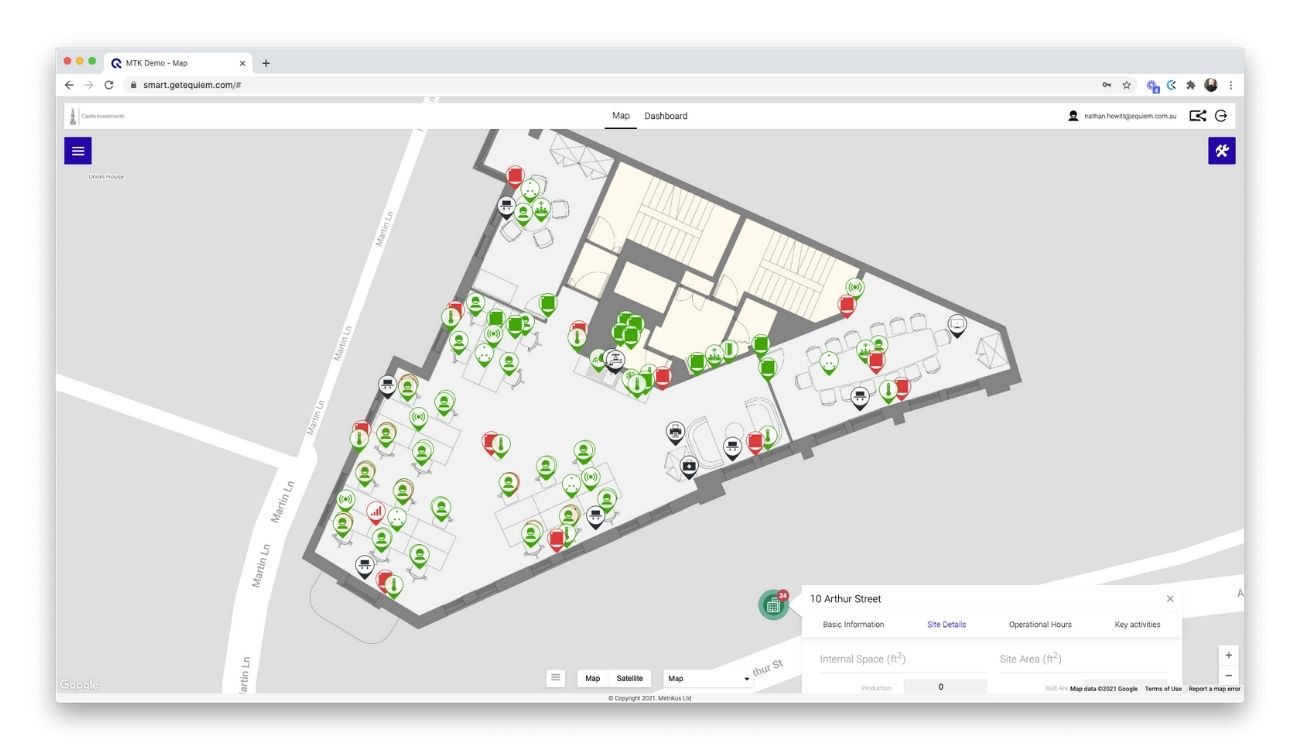Post-pandemic, certain smart building tech solutions can give landlords an attractive and unprecedented tool to attract tenants, particularly in the new world of hybrid working.
In his recent Propmodo article De-Densification and the New Metrics of the Office, Antony Slumbers advances the idea that offices, if properly configured, can achieve new relevance and purpose in the hybrid-working world as hubs of measurable productivity. Employees will have their home offices, with all the attendant benefits, such as work-hour flexibility and the lack of commute — but the office can be more than a cumbersome like-for-like substitute, or a periodic meeting place.
If landlords can prove that their buildings are quantifiably better for productivity than the home office, then companies have a compelling reason to continue and renew their leases.
"No business actually wants an office," Slumbers writes. "What they want is the best outcome for the office. What they want is a productive workforce. They want a creative workforce. They want a happy and healthy workforce.
"...So what if you made improving the productivity of people the core value proposition within the office? What if we stopped thinking about space, and started thinking about improving the productivity of people?"
It is possible, with the right solution, to make the office such an incubator.
How Smart Building Tech helps make people productive
The answer is simpler than we might think. According to Metrikus — our partner in providing Smart, our building occupancy and air quality tracking system — lower CO2 levels make for more productive humans. Citing research from the UK, they point out that high levels of CO2 cause a 23% impairment in decision making, and an 11% reduction in productivity.
Slumbers echoes this research: "Because we know if a space is too hot or too cold, or has carbon dioxide levels that are too high, or is too noisy, or has poor lighting, or is too humid, or not humid enough, the effect will be that the occupiers of that space will have their cognitive functions impaired.
"Get these environmental factors right and we know we can help enable people to be as productive as they are capable of being."
Our Smart solution enables you to do this very thing. Using Smart, you can track lobby traffic, building occupancy, air quality and more — across tenancies, common areas, elevators, buildings, and even your entire portfolio. Even better, all of this tracking data is fed to you in real time. This real-time data helps you to improve the health and wellbeing — and thus the productivity — of your tenants.

Smart works using small, non-invasive sensors that are placed at regular intervals throughout your buildings. The sensors capture data and send it to your dashboards on a minute-by-minute basis — and from there, if you decide, you can filter that data to your tenants.
Quantifiable data is within your grasp. And once you have it, you can easily couple it with qualitative feedback — such as company satisfaction surveys — to demonstrate clear value to hybrid-geared tenants.
What about space?
Being able to demonstrate the causal link between air quality and productivity is one benefit of a smart building solution — another, which is of urgent interest to tenants, is space. "Across the workplace," Slumbers writes, "also at a very granular level, we need to know: What space is being used, at what time, by what teams in what location? What is the space to desk ratio?"
Smart also helps with this. You can see, in real time, how your building and offices are being occupied: What your tenant densities are, where the high-traffic points are, and more. This is an attractive value proposition to tenants: We can keep you safe and socially distanced, show you the usage habits of your employees over time, and cross-reference this data with other metrics to give you a better picture of office wellbeing and productivity.
Take JP Morgan Chase, who has just announced it will significantly reduce its office footprint in the coming years. As reported by Biznow, CEO Jamie Dimon said the firm will "quickly move to a more open seating arrangement, in which digital tools will help manage seating arrangements, as well as needed amenities, such as conference room space." JP Morgan Chase sees the value in solutions which track and manage space, and it is very likely its move will influence many other companies in the near future.
Still not convinced? Consider the words of Harvard Professor John Macomber (via Slumbers): "Healthier buildings will be able to show their value to occupants in a very empirical way... people are tuned in now so I wouldn't be surprised if they started to ask for data around air exchange, volatile compounds and CO2 in the air, and an average number of sick days from their buildings."



